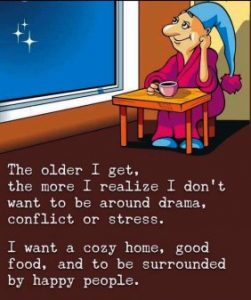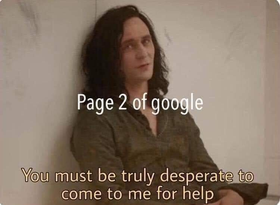 Global health is a planetary phenomenon that can be scary if we think about it in terms of mindless resource consumption, structural inequalities, human experimentation, military biological programs and so on (Crawford, 2021; Sweeney, 2022). Based on numerous definitions (Beaglehole & Bonita, 2010; Koplan et al., 2009), I would define global health as an art and science of solving health issues beyond the national borders. Global health has ties with modern technologies in questions of their impact on people’s health and planet as a whole. Global health is connected with education and economy as it is essential for any society to get a healthy graduate.
Global health is a planetary phenomenon that can be scary if we think about it in terms of mindless resource consumption, structural inequalities, human experimentation, military biological programs and so on (Crawford, 2021; Sweeney, 2022). Based on numerous definitions (Beaglehole & Bonita, 2010; Koplan et al., 2009), I would define global health as an art and science of solving health issues beyond the national borders. Global health has ties with modern technologies in questions of their impact on people’s health and planet as a whole. Global health is connected with education and economy as it is essential for any society to get a healthy graduate.
Let us look at the interconnectedness of technologies, education, and global health through the lens of a recent massive health crisis. When asked about types of health, people usually remember three sides of a triangle: physical health, mental health, and social health. The pandemic revealed the significance of all three of them. Specifically, COVID-19 period had differential effects on multiple education players, for example, kids from kindergarten to Grade 12 re-evaluated friendship, feeling connected, and participating in extracurricular activities (Bennett, 2020); unsuspecting parents were found worthy to complement math, physics, history and reading learning of their children (Burgess & Sievertsen, 2020; Kuhfeld et al, 2020); everyone realized how important physical and social developments are for the young learners; adult high achievers in colleges and universities barely noticed the educational medium change etc.
I am glad that questions of equality, building character, resilience, and relational skills (Boys, 2021; Primer, 2020), the foundations of mental and social health of learners, are highlighted by the pandemic researchers. However, I cannot agree with some conclusions drawn from the COVID experiences, for example, placing elected politicians in a God’s position (Primer, 2020, p. 5), or thinking that traditional teaching is somehow flawed (Primer, 2020, p. 5), and simplification of education is due.
In reality, modern kids will easily acquire the computational and digital skills because children get digital devices first and foremost as their parents’ attention substitute. With those high-tech toys parents usually buy some of their life back. At the same time, “large quantities of traditional data in the established sciences, literature, history, mathematics, and physics” that the Primer’s (2020) authors criticize on Page 5 for no particular reason will provide an excellent background for “sound analysis and decision-making” that they strive for on Page 6.
In my opinion, we should not allow overly enthusiastic and inexperienced policy makers to use this health crisis for further destabilization of education. Any serious innovations have to be suggested only after the COVID-19 occurrence is thoroughly analyzed, not to imbalance the educational system more with the unreasonable reforms.
In general, as any big social event, the COVID-19 pandemic 2020-2022 had its positive and negative outcomes: in nature, pollution diminished, and flora and fauna flourished; consequently, many reported seeing the Himalayas for the first time in decades since the smog had disappeared. In medicine, lack of medical practitioners surfaced. In education, online delivery and educational technologies grabbed everyone’s attention. In a society overall, occupations that deemed fashionable lost their glamour, and simple and kind people’s attention and relationships became priceless, to mention some changes.
I could not help touching upon one more aspect of today’s world health where the topics of this course naturally merge. According to Koplan et al. (2009), migrant-worker health is also a part of global health (p. 1994), and it is obvious that Ukrainians moving to Canada are bringing a lot of pain with them which they subconsciously redirect toward people around.
It can take different forms: Ukrainian Canadian social workers point out excessive demands from the newcomers; host Canadian families – inactivity; my Ukrainian Canadian friend who recently visited an in-person welcome meeting for Ukrainians – arrogance etc. I reckon all those stress manifestations, from overcompensation through stupor to depression, signal the painful struggles that the new migrants are dealing with in the process of adaptation to a very different society.
I do not think that displaced Ukrainians are ready for a Canadian education as the best way to adjust unless they were students at home, but I am certain that social media can help them ruminate over what they lived through and relieve some inner tension since it is not common in Ukraine to visit a psychotherapist.
As we know, media functions include information, a public forum, an outlet for escapism and creativity, entertainment, a watchdog for government and other institutions, and education (Understanding Media and Culture, 2010). This specific environment where “information is shared and processed by algorithms which shape the kinds of information human actors are exposed to and the kinds of interactions they can have in real time” (Jones, 2020, p. 19) together with an international virtual audience can be quite supportive, helpful and understanding; online posts and commentaries, individual or in groups, will serve as a non-discriminating and soothing diary; and as a result, it will be possible for many Ukrainians to draw some conclusions and make peace with themselves. This mental health improvement of one national group will contribute to general health enhancement for humanity.
To sum up, everything is connected on Earth, for example, the COVID-19 pandemic impacted medicine, education, government, economy, business, industry, technology, and social life worldwide (Canadian Commission for UNESCO, 2020). To move on, we should carefully examine the COVID-19 disaster and its consequences, use what positive we still have, and avoid exacerbating current situation with technology, education, and global health. I would like to underline that global health depends on a lot of factors, and the best we can do to keep it sustainable is to take care of our individual mental, physical, and social state because “we are all one body moving through time and space together” (Waganese, 2013).
References
Beaglehole, R. & Bonita, R. (2010). What is global health? Global Health Action, 3, 5142. https://www.ncbi.nlm.nih.gov/pmc/articles/PMC2852240/
Bennette, P. W. (2020, July 20). The educational experience has been substandard for students during COVID-19. Policy Options Politique. https://policyoptions.irpp.org/magazines/july-2020/the-educational-experience-has-been-substandard-for-students-during-covid-19/
Boys, J. (2021). Exploring inequalities in the social, spatial and material practices of teaching and learning in pandemic times. Postdigital Science and Education, 4, 13-32. https://doi.org/10.1007/s42438-021-00267-z
Burgess, S., & Sievertsen, H. H. (2020, April 1). Schools, skills, and learning: The impact of COVID-19 on education. VoxEU. https://voxeu.org/article/impact-covid-19-education
Canadian Commission for UNESCO (2020, April 20). COVID-19 is creating a world crisis in education. UNESCO. https://en.ccunesco.ca/blog/2020/4/online-educational-resources-covid19
Crawford, K. (2021). Atlas of AI: Power, politics, and the planetary costs of artificial intelligence. Yale University Press. https://doi.org/10.12987/9780300252392
Jones, R. H. (2020). The rise of the pragmatic web: Implications for rethinking meaning and interaction. In C. Tagg & M. Evans (Eds.), Message and Medium (pp. 17-37). De Gruyter Mouton. https://doi.org/10.1515/9783110670837-003
Kuhfeld, M., Soland, J., Tarasawa, B., Johnson, A., Ruzek, E., & Lewis, K. (2020, December 3). How is COVID-19 affecting student learning? Brown Center Chalkboard.
Koplan, J. P., Bond, T. C., Merson, M. H., Reddy, K. S., Rodriguez, M. H., Sewankambo, N. K., & Wasserheit, J. N. (2009). Towards a common definition of global health. Lancet, 373, 1993–1995. https://doi.org/10.1016/S0140-6736(09)60332-9
Primer: The COVIDEA universe at a glance. (2020). Covid Education Alliance (COVIDEA).
Sweeney, S. (2022, June 14). After months of denial, U.S. admits to running Ukraine biolabs. People’s World. https://www.peoplesworld.org/article/after-months-of-denial-u-s-admits-to-running-ukraine-biolabs/
Understanding media and culture: An introduction to mass communication. (2010). The University of Minnesota Libraries Publishing. https://open.lib.umn.edu/mediaandculture/
Wagamese, R. (2013, June 11). Wagamese: ‘All my relations’ about respect. Kamloops Daily News. https://kamloopsnews.ca/kdn-opinion-columnists/wagamese-all-my-relations-about-respect/
 Content prioritization is a way to organize things. Humans prioritize all the time whatever we do. An ESL teacher prioritizes a course content at the beginning of the semester after studying students’ diagnostic test results, and then the educator does that every day with the material for studies, according to the students present in class and their particular needs. Applied to algorithms, content prioritization means records “presented in a ranking order” (Noble, 2018, p. 123).
Content prioritization is a way to organize things. Humans prioritize all the time whatever we do. An ESL teacher prioritizes a course content at the beginning of the semester after studying students’ diagnostic test results, and then the educator does that every day with the material for studies, according to the students present in class and their particular needs. Applied to algorithms, content prioritization means records “presented in a ranking order” (Noble, 2018, p. 123).